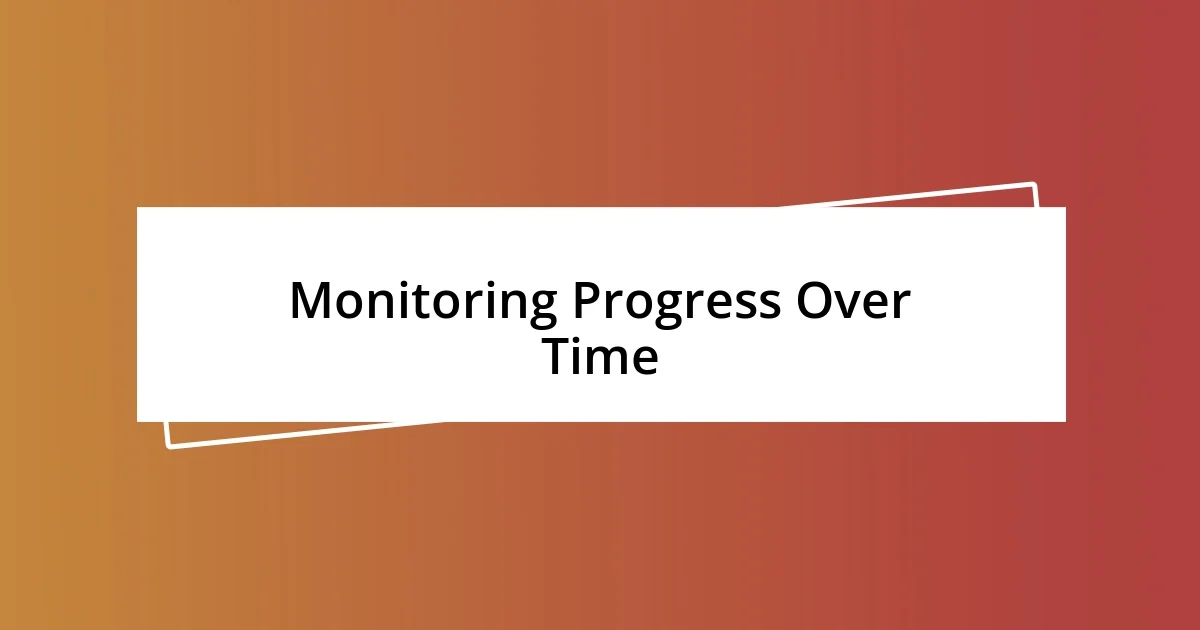Key takeaways:
- Long-term goals provide direction and clarity, allowing individuals to break down overwhelming tasks into manageable steps and fostering resilience during setbacks.
- Conducting a personal assessment helps align goals with core values and strengths, which makes pursuing them more meaningful and sustainable.
- Flexibility in goal-setting, including regular reassessment and adaptation, is essential for growth and can lead to unexpected opportunities and renewed motivation.

Understanding Long-Term Goals
Long-term goals are like the North Star in the vast sky of our lives; they guide us toward our destination. I remember when I decided I wanted to write a book, which seemed daunting at first. It made me realize that having a vision can be incredibly powerful, but why do so many people overlook the importance of clarity in their goals?
Setting long-term goals allows us to break down the seemingly overwhelming into manageable steps. For instance, when I wanted to run a marathon, the thought of 26.2 miles felt insurmountable. Instead of fixating on the finish line, I focused on smaller milestones like increasing my weekly distance. Isn’t it fascinating how each small achievement builds momentum toward something larger?
Understanding long-term goals also requires introspection about what truly matters to us. I’ve seen friends chase careers based on external expectations rather than their passions, leading to burnout and dissatisfaction. What if I told you that aligning your goals with your core values can transform your journey? When I aligned my writing goals with my love for storytelling, every piece felt energizing.

Importance of Setting Long-Term Goals
Setting long-term goals is fundamental because they provide direction in life. I still recall deciding to save for a house; that vision kept me motivated during times when expenses felt overwhelming. Knowing there was a tangible outcome pushed me to be disciplined with my finances—kind of like having a financial compass to navigate life’s unpredictability.
Here are some key reasons why setting long-term goals is essential:
- Focus and Clarity: A clear long-term goal narrows your attention, helping you avoid distractions that can derail your progress.
- Motivation: Having a long-range vision fuels motivation, especially during hard times. It reminds you why you started in the first place.
- Progress Tracking: Long-term goals help you measure your growth over time, allowing you to celebrate milestones, no matter how small.
- Resilience: When you hit obstacles, your commitment to your long-term goals can foster resilience, reminding you that setbacks are just part of the journey.
I remember feeling overwhelmed when I initially faced setbacks in pursuing my career goals. Yet, my long-term aspirations helped me reframe those challenges as lessons rather than roadblocks. Every twist and turn only fueled my determination to keep moving forward.

Conducting a Personal Assessment
Conducting a personal assessment is an essential step before committing to long-term goals. Reflecting on my strengths and weaknesses allowed me to identify what truly drives me. For instance, when I evaluated my personal habits, I discovered that I thrived in structured environments. This insight helped me design my goals around routines that complemented my strengths, making the pursuit more enjoyable and sustainable.
As I conducted my assessment, I found it invaluable to seek feedback from trusted friends and mentors. Their perspectives revealed blind spots I had overlooked. Once, a mentor pointed out that my fear of public speaking was holding me back from achieving greater outreach in my writing. Their honest feedback nudged me to join a local speaking club, which has since transformed my confidence and broadened my networking opportunities.
The process of personal assessment can be broken down into a few key components. I’ve realized that examining my values, skills, and past experiences is the foundation for creating realistic long-term goals. A personal inventory not only clarifies what I want but also why I want it. This deepening of understanding elevates my motivations from mere ambitions to heartfelt pursuits, making every action I take more meaningful.
| Assessment Component | Description |
|---|---|
| Strengths | Identifying what you excel at, which can guide your goal-setting. |
| Weaknesses | Acknowledging areas for improvement to avoid potential pitfalls. |
| Values | Understanding what matters most to you, ensuring your goals align with your core beliefs. |
| Feedback | Gathering input from others provides a broader perspective and helps identify blind spots. |

Creating a Strategic Plan
When it comes to creating a strategic plan, I find the first step is to break down your long-term goals into manageable chunks. For me, this meant setting annual, quarterly, and even monthly objectives. I remember the sense of achievement I felt when I completed my first quarterly target—it was like the puzzle pieces of my larger dream were finally falling into place, making the big picture seem less intimidating.
Next, prioritizing your goals is crucial. I often ask myself, “What will have the most significant impact on my journey?” Going through this thought process helped me realize that some tasks, though they may seem urgent, aren’t necessarily important for my long-term vision. For instance, I used to get sidetracked by smaller projects, but focusing on the tasks that aligned closely with my core objectives transformed my productivity and kept me on a clear path.
Finally, flexibility in your strategic plan can’t be overlooked. Life is unpredictable, and sticking rigidly to a plan can lead to frustration. I once found myself at a crossroads when a job opportunity came up that wasn’t part of my original strategy. I decided to adapt my plan to include it, and it turned out to be a game-changer for my professional growth. This experience taught me that a strategic plan should serve as a guiding framework rather than a strict rulebook—after all, sometimes the best opportunities arise when we’re willing to adjust our sails.

Breaking Down Goals into Steps
When I broke down my goals into steps, I found it incredibly helpful to visualize each stage like a staircase, where each step leads you closer to the summit. At one point, I had a dream of writing a book, but the thought of the entire process felt overwhelming. By chunking it down into smaller tasks—like outlining the chapters or writing a paragraph each day—I transformed a daunting task into manageable pieces that I could tackle one at a time. Have you ever felt stuck just because a goal seemed too big?
As I moved forward with my broken-down goals, tracking my progress became essential. I started using a simple bullet journal to list each step I completed. It was surprisingly rewarding! Each tick off the list not only provided motivation but also a tangible sense of accomplishment. I vividly recall the thrill I felt when I completed my first draft—each word was proof that I was progressing. This led me to wonder, how often do we celebrate our small victories along the way to our larger aspirations?
Moreover, I learned the importance of revisiting and adjusting my steps as I progressed. Every few weeks, I would review my goals and the steps I took, reflecting on what worked and what didn’t. One time, I realized that my writing routine wasn’t fitting well into my life anymore. Adapting my steps to incorporate a different time slot made all the difference. I began to embrace the idea that goals are not static; they evolve just like we do. How about you? Are you allowing room for growth in your goal-setting journey?

Monitoring Progress Over Time
Monitoring progress over time requires a proactive approach that goes beyond mere tracking. I remember the first time I established a dedicated review period; I set aside Sunday evenings to reflect on my progress. It felt like flipping through a personal diary, capturing my victories and lessons learned. This ritual not only kept me grounded, but it also allowed me to dive deeper into my emotional connection to the goals—do you ever feel that sense of clarity when you pause to reflect on your journey?
There’s a certain power in visualization when monitoring progress. I started creating visual boards that showcased my milestones, and this practice transformed my perspective. Suddenly, I could see the paths I had taken and the hurdles I’d crossed. Each photo, each sticky note reminded me of my journey, no matter how challenging. Have you tried something similar? You’ll be surprised how motivating it is to see your progress laid out before you, almost like a map of your achievements.
Lastly, I learned that accountability plays a vital role in staying on track. I buddy up with a friend who has similar ambitions, and we check in with each other regularly. These conversations are rich with insights and occasionally a sense of urgency that propels us forward. I can still hear my friend’s laughter as we discussed our goals—it made the process feel less daunting and much more enjoyable. Have you considered finding someone to share your journey with? Sometimes, a supportive voice is all you need to keep you moving toward your long-term aspirations.

Adapting Goals as Needed
Adapting goals is an essential part of the journey. I once set a goal to run a marathon, excited to join the community of runners. However, as training progressed, my knees started to ache, and I faced the reality that my original goal might be too ambitious at that time. Rather than abandoning the dream altogether, I adjusted my focus to completing a half-marathon instead. This change allowed me to maintain my fitness journey while avoiding injury. Have you ever had to pivot in a way that felt right, even if it wasn’t what you initially envisioned?
Flexibility in goal-setting often opens up unexpected opportunities. For instance, while I was working towards my career milestone of becoming a team leader, I discovered that I had a passion for mentoring younger colleagues instead. By adapting my goal to include mentoring as a significant facet of my leadership journey, I found myself not just growing as a leader but also creating a supportive network within my workplace. Isn’t it intriguing how sometimes, what we need most comes from adjusting our path?
Regularly assessing my goals has also made a significant difference. I remember a time when I wanted to master photography but was overwhelmed by the technical aspects. After some soul-searching, I decided to shift my focus to storytelling through pictures, using my experiences and emotions in each shot. This not only rekindled my excitement but also allowed my creativity to flow more freely. How often do we overlook the magic that can happen when we embrace change? Adapting my approach was truly liberating, and what’s more, it led to a newfound sense of joy in my journey.













